In Search of the Obelisk
It was around 4:00 in the morning in Hekou, China, when the Sim City 2000 theme song rang out once again calling us to action. There was a slight mist falling, as we rode the still empty and glistening streets toward the bus station, which lay deep in the heart of the import-export/prostitution part of town. When we got to the station, our half-sized bus to Jianshui (建水) was idling, as though waiting for us. There was no extraction of extra luggage charges here. In China, it seems, people are expected to be transporting large things, and the Speed TRs were treated as a welcome addition to the belly of the bus. We climbed on and immediately fell asleep.
When I awoke, we were driving through wide open country, rocky and arid, with scrubby vegetation clinging to rolling and gravely hills. I wiped the sleep out of my eyes and looked around. It looked like Wyoming.

The roads were brand new, wide and inviting. As we rode, the bus passed through a great many tolls, demonstrating that it was also not cheap to drive this route. The cars that rode alongside us were Japanese and European and quite new-looking. This part of Yunnan had money… where it came from though, is perhaps best left to speculation in the comments.
We stopped at a gas station to refuel the bus, and a woman came on board, peddling from a steaming bucket of Chinese-style corn on the cob. I was quite surprised when the majority of people on the bus actually purchased ears, and for the price of about 13 cents an ear, Scott and I were finally tempted to do the same. As we munched away on what I must admit was a chewy and rather distasteful cob (at least by Iowa standards), we humored our fellow passengers who, now that the foreigners had awoken, were very interested in chatting, and in particular to hear whether or not we approved of the corn.
The roads grew larger, and the traffic denser, and soon we were swooping through a great clover-shaped round about, making our way into Jianshui. The bus stopped in the outskirts of town, not at a bus station, but just at the side of the road, in a large intersection. We climbed out, and the dry hot air engulfed us. After so many weeks of humidity, we had come to cherish these dry climates. The sun was exceedingly bright in the cloudless blue sky, and after unloading the cycles from the bottom of the bus, we were quick to put on the Maui Jims and Panama hats.
As the bus pulled away, we were surrounded by an interesting collection of characters, most of them equipped with small three-wheeled goods transportation vehicles. This fellow was particularly dashing.
We strapped our luggage to our cycles and headed toward town. We rode by a number of very tempting giant Chinese business hotels, many of them featuring large KTV centers. We were headed for the older part of town. You see, dear reader, Jianshui is actually a rather old city, known for its large population of the Muslim “Hui” minority. Â Once walled and gated against outside attack, some parts of the wall and the great central gate still exist, and it was these that we were looking for. Unfortunately, we were not sure where they were. The city was large, by anything other than Chinese standards, and as far as we could tell it was just giant brand new boulevards and huge (probably mostly empty) business hotels in every direction.
We finally reached an intersection at the top of a long gently sloping hill, and saw a tree-lined street. There had been very little green for the entirety of the ride hitherto, so we decided to take a licht onto this road. It turned out to be serendipitous, for instantly not only were we granted a cool shady thoroughfare, but we began to see the telltale terra-cotta roofs of an old Chinese city. It was then that we realized that other than the corn, we had eaten very little and were seriously lacking in the caffeine department. To rectify this, we called a waypoint at a news stand, where Scott requested a recommendation for a tasty local noodle house. It happened to be that a passing Chinese woman overheard his request and offered to lead us to exactly such a place, if we would follow her on her moped. This we happily agreed to. As an added bonus, she took bishop and led us directly into the old city.
The noodle spot was incredible, specializing in a local delicacy called Mi Xie, which is a tomato-based, spicy pork noodle dish.

We slurped and fell quickly into the mists of noodle ecstasy. Once the mists had cleared, we were free to look at the city of Jianshui with new eyes. This part of town was markedly different from what we had seen earlier. The streets were cobblestone, and few cars dared venture in. The majority of foot traffic consisted of what appeared to be wealthy Chinese women carrying shopping bags. Basically, Jianshui was doing just fine.
Refueled and refreshed, though still drastically under-caffeinated, we headed out into the old city in search of a hotel. We found a great many of them with little difficulty. Most were of a rather distinctive style, which I had not yet had the pleasure of encountering in my travels. The exterior of these hotels was painted and carved with a great many ornate panels, mostly in shades of turquoise, yellow, and red. These panels covered each of the balconies and were removed or folded back once the room was rented. We toured a great many of these, all of which were quite affordable. We were, of course, interested in accessing the Internet from our room, so it took a fair bit longer to find the right place, but when we did, we were so thoroughly ecstatic about it, that the prolonged searching felt more the justified.
The place was of that same exciting new variant that we discussed previously, except with that Chinese business hotel flare that we had come to know and love during our time in Hekou. Our room was immaculately clean, with Internet, in-room water bubbler, startlingly white sheets and bedspreads, a delightful balcony, in-room tea set, a gigantic television, which we were able to hook up via RCA to our computers for broadcast of hi-fidelity American hip hop tunes, and all for about 16.00 USD a night. We threw down our things and wasted little time in climbing back on the cycles.
We headed out into the city in search of coffee. This proved exceptionally difficult, and finally we were forced to settle for a box of Nescafe packets. We headed from the Nescafe to search for a small Chinese restaurant that might be willing to grant us free hot water, or perhaps a cup of hot tea into which we might dissolve the artificial, though necessary, brew. We managed to stumble upon an unassuming little shop, where a tall Chinese man was lounging and reading a newspaper.
We sat down and ordered two teas and two cups of hot water. For the tea, he headed over to a very old and special looking greasy cardboard tube, out of which he pulled two large nuggets of fragrant dry tea. He filled our cups and we began to chat. Soon we had gone through many cups of tea, as the chap guided us through the arc of flavor which one experiences after many soakings of the leaves.
We found ourselves even getting somewhat embarrassed, as the punk Americans who had the audacity to try and drink coffee in Jianshui. We asked him a little bit about the restaurant. It was a very down-home version of one of those Chinese choose-from-the-bank-of-ingredients joints, and this fellow was the proprietor and chef. He had been running the restaurant for over 20 years, and seemed to be somewhat of a local wiseman, evidenced by a number of people who came to him to ask advice on unknown topics during our time there.
When we finally left to continue our wheel, the man refused to take any money from us. It seems he had taken a bit of a shine to AsiaWheeling, and we had certainly taken a shine to him, so we vowed to come back before we left Jian and eat dinner with him. In the meantime there was wheeling to do. Â Back on the cycles, we headed north, out of the city into the surrounding countryside.

The natural landscape of this part of China is semi-arid, but the people of the city had dug an elaborate system of irrigation ditches that allowed them to grow rice, in addition to all manner of other plant life. I was very impressed by the massive diversity of crops which were being grown in this small fertile valley, and even more impressed with how heterogeneous were the crops that were being grown: greens, corn, herbs in greenhouses, beans, rice, livestock… they all seemed to be coexisting in this little artificial green zone. It was beautiful.
We were getting a little peckish just as we were wheeling by a group of Chinese gentleman who were harvesting carrots from a large muddy plot. They had a small flatbed auto-rickshaw that they were filling with carrots and we wheeled up to see if they might be interested in selling us a couple to munch on.
When we arrived, they were so delighted to see us wheeling up on the speed TRs that it was all we could to to walk away without a giant bundle of free carrots.
Jianshui was quickly climbing the ladder in terms of favorite places on our journey.
As we were munching carrots, and doing our best to relate to the carrot-pulling chaps, we noticed a large stone obelisk looming in the distance on the top of a hill overlooking Jianshui.
What was this, we asked our new carrot-pulling friends. They seemed to have little interest or knowledge of the place, but Scott and I found it rather intriguing. We decided it would be a good waypoint, and with hearty farewells, headed out in search of a means to climb up to its base for a better investigation.
To reach the obelisk, we had to make our way across the artificially fertile valley into which we had wheeled in search of adventure and carrots.This meant taking the Speed TRs across the web of raised dirt walkways that separated the plots of irrigated land.
Luckily the cycles were more than up to the task.
On the other side of the great irrigated valley, we found ourselves in a much older looking settlement. We took a number of wrong turns, climbing a number of crumbling brick roads, none of which seemed to get us any closer to our goal. We finally called an uberlichtenschtein near a small child defecating in the street, and eventually made our way from there to a dirt road that appeared to be the only remaining option which had any chance of getting us closer to the obelisk. So on we rode, sheltered from the afternoon sun by a canopy of thick, bushy foliage. The obelisk was now looming very close, towering over us in fact, but we had no idea how to get to it, save trespassing across what looked like a large fenced-in grape-growing operation.
It was then that we pulled over to ask a group of women and children about how to access the obelisk. The women seemed thrilled to meet foreigners this far out of town and were more than happy to tell us at great length that one had to circle around to the other side of the hill in order to get up to the obelisk.

And so we did. The dirt road we had been taking eventually became paved, and merged with a larger road, headed toward the other side of the mountain. The main purpose of this road, however, was obviously not to serve traffic to the obelisk. Our fellow travelers were all large mining trucks that lumbered by, clanking and emitting great clouds of smoke and dust.

The drivers of the trucks seemed thrilled to see us working our way down the road, and were more than happy to honk (deafeningly) and wave emphatically at us. We saw a giant unintelligible sign in Chinese and decided this must be the road to the obelisk, so we turned.
Now we were climbing uphill, over a rough rocky path. As we gained elevation, the mining operation began to spread out to our right, and the vastness of the artificial fertile valley on our left. Soon, the road we were riding became too steep, gravely, and hard to follow, and we parked the bikes.

From there we headed forth on foot, climbing up the last bits of rocky soil to find ourselves at the base of a giant obelisk. What exactly the purpose of this strange tower was, we will likely never know, but the feeling of finally reaching it was intoxicating.

We spent some time at the top of the hill, overlooking the valley and the mining operation, studying the tower, which itself turned out to be made of large stone blocks, and exploring the general vicinity.
With the sun beginning to sink low in the sky, we climbed back on the cycles, and headed back to town, cutting once again through the irrigated valley, and climbing back up into Jianshui’s old city.
At the top of the hill, we stumbled upon a large community effort to harvest great bucketfuls of water from the community well, which were carefully transferred into the kind of large plastic vessels that often contain gasoline.
We passed the people drawing water, and headed toward the same small restaurant at which we had enjoyed tea earlier that day.
The owner seemed to be expecting us, and met us at the door with a kind of knowing grin. We spent the rest of that evening feasting on pork and greens, associating with the owner and a few other patrons who trickled into the two-and-a-half-table restaurant as the night went on. The owner seemed quite proud of us, and with a large smile explained to the other patrons how we spoke very good Chinese, used chopsticks well, and could handle spicy food.
It felt great, like we had been invited into a kind of Jianshui secret society. At the end of the meal, the owner quoted us a price for the food that was so small, even by Chinese standards, that we felt compelled to reverse bargain with him to ensure that he was not suffering a loss due to our dining with him.
We parted on the very best of terms, shaking hands warmly with everyone in the restaurant and riding through the warm night air back to the air-conditioned luxury of our hotel.




























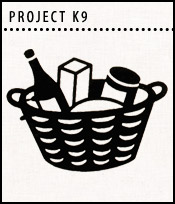
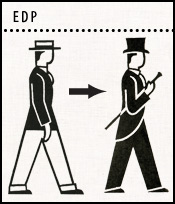
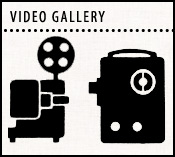
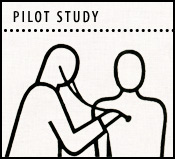
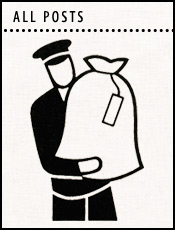
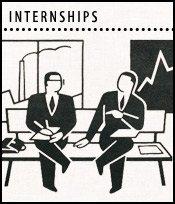




Comments
Wonderful post! Sounds like Jianshui is the place to be.
@ Nate
Thanks, Nate. We completely agree. Jenshui is the place to be.
Another great post, boys. I love the Conestoga-type wagon in picture #4, an icon of the old American west. Was the corn sweet or just starchy? Can’t believe how muscular both your legs have become. That last meal looks amazing!
BRAVO! the outpouring of hospitality is heartwarming!
@ Diane
The corn was sweet, but not too sweet… starchy but not overwhelmingly so… mostly it was just devastatingly over cooked and had a very strong… unnervingly corny flavor. You flatter our legs too much.
Nicely done! Great to “meet” the restaurant owner, and the carrot harvesters. The obelisk is an odd mystery–no one seeming able to explain its origin. I found the pictures of the hotel balcony and the young girl riding backwards on the scooter particularly nice.
[…] down, slightly neutered version of the China that we’d come to know and love in Cities like JianShui, Urumqi, and Hohhot. Now we were wheeling with the people again, like this lady, transporting a […]